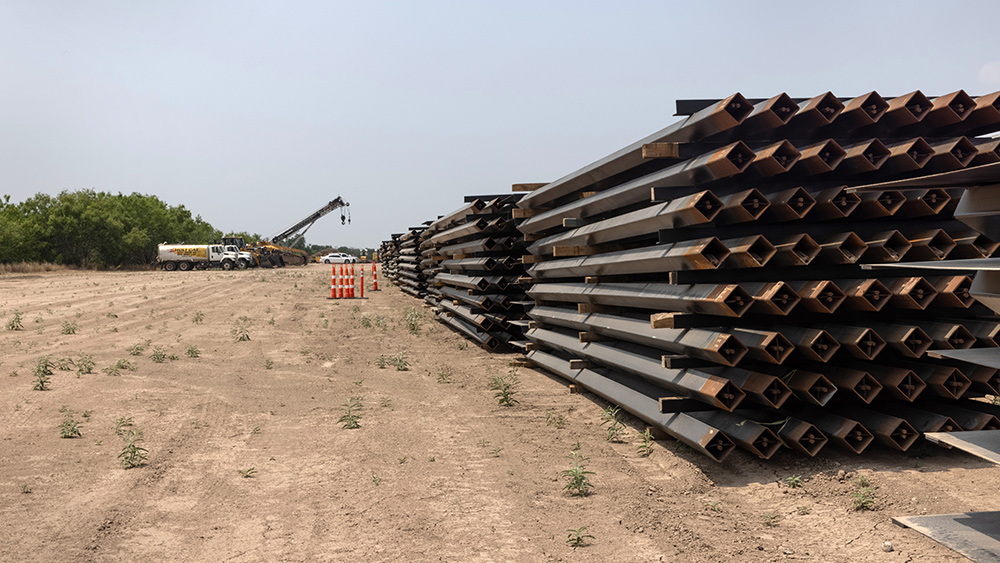Levee construction underway in Mississippi River to keep salt water out of drinking water amid record low water levels
10/20/2022 / By Cassie B.

Construction is currently underway on a 1500-foot wide levee beneath the Mississippi River to stop salt water from pushing up the river as it faces record-setting low levels.
The problem is the result of an ongoing drought paired with the rising sea level along the coast. At the mouth of the Mississippi River, these issues are coming to a head as low flow enables saltwater from the Gulf of Mexico to push its way up the river and put the drinking water supply in jeopardy.
When the river’s flow drops beneath a rate of 300,000 cubic feet per second, it no longer has the force needed to keep salt water at bay. The U.S. Geological Survey reports that the flow rate in the area has been under 200,000 cubic feet per second for at least a week.
Last week, the U.S. Army Corps of Engineers announced that they would be dredging sediment from the bottom of the river to pile it up into a sill near Myrtle Grove. This will serve as a dam for denser salt water found in the river’s lower levels. The sill will reportedly extend 40 to 50 feet high in water that is roughly 90 feet deep.
The same strategy was used three times in the past to address dense salt water in the Gulf of Mexico pushing up the Mississippi River. While Corps officials declined to share the price of the project, it is estimated to cost around $10 million.
However, it is only intended to be a temporary measure. Experts report that these issues usually resolve on their own once enough rain has fallen upstream to alleviate drought conditions. Unfortunately, the current forecast doesn’t show any signs that this may happen soon, with dry weather and lower-than-average rainfall expected through the remainder of the week.
In recent weeks, ongoing drought conditions have taken their toll on the Mississippi River, where dozens of gauges are below their low water thresholds. For example, the river gauge in Memphis fell to a record-setting low of -10.75 feet on Monday.
Meanwhile, saltwater intrusion has already started to effect a Boothville water treatment plant and will soon reach a different one in Pointe a la Hache, both of which are situated downriver from the location where the sill is being formed.
According to Army Corps Chief of Public Affairs for the New Orleans District Ricky Boyett, the location of the sill was selected to prevent salt water from making its way to Belle Chasse and New Orleans.
He explained: “When you’re looking at the areas below the Belle Chase, the smaller water intakes that Plaquemines is using, the parish kind of has the responsibility for mitigating for that saltwater because it is a natural phenomenon.”
Drinking water advisories already in effect
High levels of sodium and chloride have already been detected in the water at the Boothville facility on account of the high levels of salt water. A drinking water advisory is currently in effect there, while Plaquemines parish plans to use a reverse osmosis machine to treat its water and remove salt and contaminants from it.
The Mississippi River delta is currently facing a slew of pressures such as frequent flooding, sea level rise, the deepening of its channel and land subsidence. Creating sills may help protect drinking water in the short term, but a more permanent fix is needed.
An oceanographer and sea level rise expert for the National Oceanic and Atmospheric Administration, William Sweet, commented: “While we understand it needs to be done, is it sustainable? I suspect that as long as (there is) the will and desire to continue to provide flood safety and drinking water availability, we will move forward as a country to provide this, but it’s going to be increasingly challenging due to the pressures of climate change and sea level rise.”
Sources for this article include:
Submit a correction >>
Tagged Under:
clean water, Climate, disaster, drinking water, Drought, environment, levee, Mississippi River, salt water, transportation, water filters, water purification, Water Wars, weather, weather terrorism
This article may contain statements that reflect the opinion of the author
RECENT NEWS & ARTICLES
COPYRIGHT © 2017 ENVIRON NEWS




















